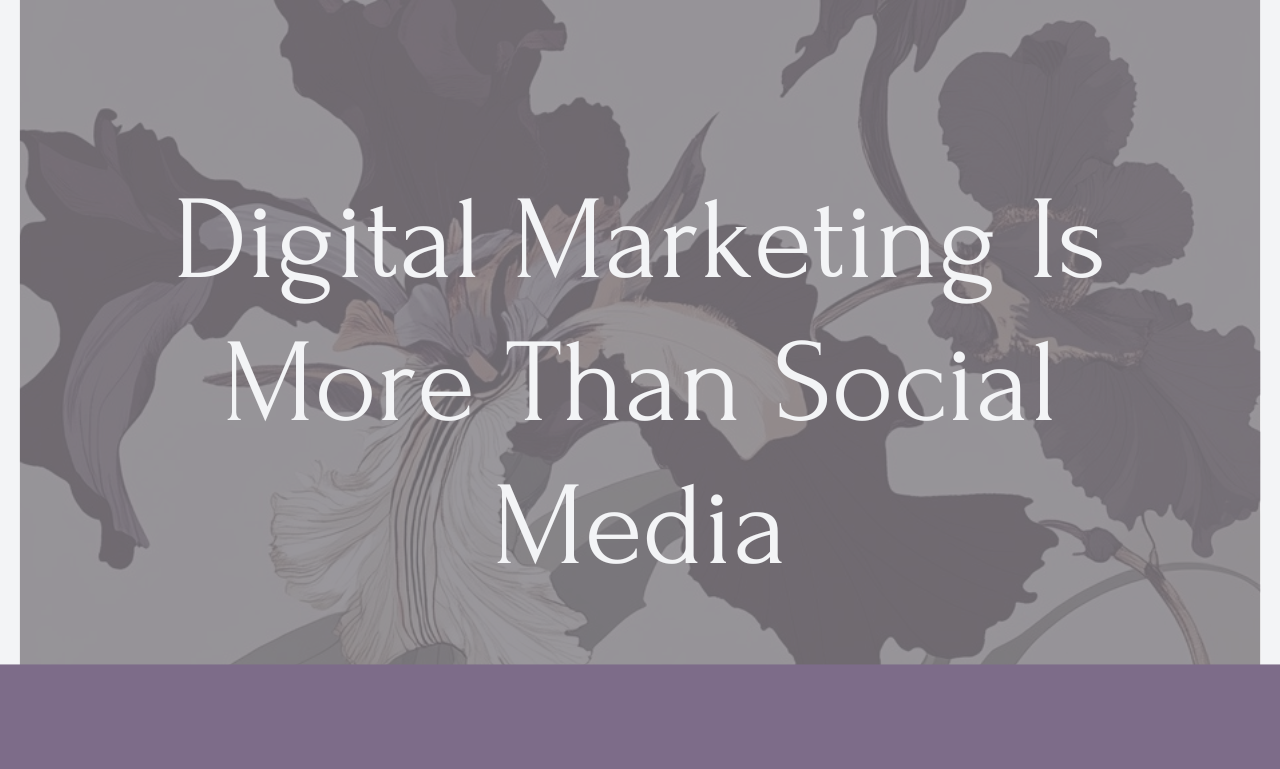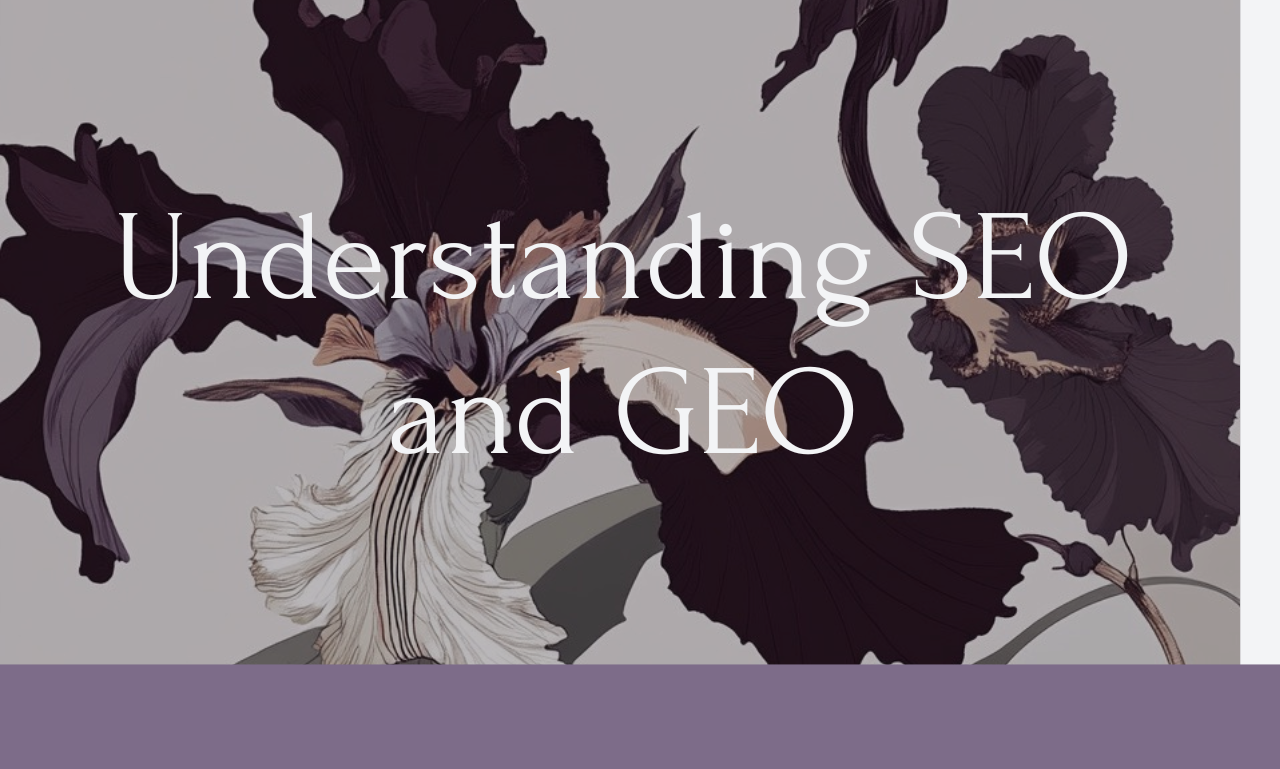
Digital Marketing is More than Social Media
Digital Marketing Is More Than Social Media
Facebook accounts have been publicly available to anyone with an email address since September of 2006. While it wasn’t the first social media platform (RIP MySpace, the kids would have loved picking a personal song for their page) Facebook welcoming the general public opened the floodgates, introducing all of us to a world made in and made by social media.
Nineteen years later, it’s not just people who use social media platforms like Facebook, Instagram, or TikTok. Brands and businesses now flock to the apps and sites. Even SnapChat—once believed to be the purview of cheaters and drug dealers alone—is no longer safe from brands and businesses.
In much the way we’ve adopted smart phones and the internet broadly as essential for human and business life, social media doesn’t seem to be something we can skip. If your business doesn’t have a social media presence, it might be easy to mistake it for a fake, especially as fradulent websites become easier to create.
But, increasingly, social media use is becoming stratified and more and more people are opting out altogether. In an interesting revelation, even Meta, the overlord social media sites for Facebook and Instagram, isn’t sure whether or not it’s a personal social networking site.
Even if people aren’t opting out of social media, it’s hard for businesses to get engagement in spaces where people want to see their friends and loved ones, or learn about local events. There might be break through moments, but, especially for businesses trying to reach other businesses, it’s often crickets. Or, if you’re lucky, likes and heart reactions from your most ardent supporters, one or two of them, and maybe your mom.
And then there’s the question of brand fit inside some of these spaces. While it might be fun (and cute!) to see your local bookstore participating in viral dances or scripted lip-synchs, the same antics from your cybersecurity software service might feel… unnecessary, if not outright cringe. (Our Gen Alpha resources told us no one says that anymore.)
But, what’s the bottom line on developing a social media strategy? What’s it’s ROI? And for how long can you count on it’s returns?
The truth is, for most businesses, social media might be a necessary evil, but it’s unlikely to be a huge driver. It remains one piece of the larger puzzle of marketing strategies, but it’s often the one taking up the most time (and money) for content creation and development.
Social media, like pay-per-click advertising and outbound marketing, doesn’t compound. If, somehow, you managed to reach virality—which has more to do with luck than quality—with your brand on any of the major social networks (even LinkedIn), for whatever reason, once your moment in the spotlight is over, it’s really, really over. Even if you’ve grown your followers, the nature of the algorithms doesn’t guarantee that they’ll continue to consistently see your new content.
So, what should you do instead?
Your company across channels
When Hubspot prepared it’s state of the industry report for marketing for 2025, they asked 1,400 marketers what had the highest return on investment (ROI) and website SEO and blogging came in first. In the year 2025! That means that the same channels that worked twenty-five years ago still work today, though how we approach SEO and blogging have come a long way.
What does that mean for your business? That means investing in the kinds of strategies that have shaped digital brands before, during, (and after?) social networking platforms.
- Invest in your website’s SEO
- Invest in developing and delivering content that speaks to your target audience
- have a realistic system for distributing your content
Your Website SEO
First, in case you’re wondering what SEO even does or what it means, it means that your brand and business can be found easily on search engines and in LLM-assisted (LLM = large language models like ChatGPT and Claude) searches based on queries, questions, or searches that don’t necessarily include your brand name.
Say, if you have developed a product that increases the security of private documents by enabling and requiring multi-level biometric scans, you might have blogs that focused on the security practices and problems in industries you were targeting, like real estate or healthcare providers. This way, if people running real estate brokerages or clinics was asking questions about appropriate security practices, they’d be able to find your brand in a search engine or LLM-assisted search.
When it comes to SEO and improving it there’s a lot to be said for going back to SEO basics for your website. Making sure that your marketing website is set up correctly can go along way to ensuring that search engines (and LLM’s) are able to effectively crawl and index your site.
So, make sure your pages are properly set-up, that your site is easy to read and navigate for human users, that your content is useful and unique, and that all your pages, videos, and images are optimized for fast load times.
These kinds of improvements matter for search engines because they matter to users. No one wants to find your site to then have to wait for it to load, or not be able to find what they’re looking for.
Once your brand or businesses marketing website is correctly structured and ready, you can start adding relevant content in a blog, video blog, or podcast series, depending on what makes sense for your and your business. Creating new content speaks to users, but also assists search engines in knowing what your brand and company offer, by creating more crawlable, indexable pages. Consistently posting new, quality content helps tell search engines that your website is a reliable place for new information.
The content you create should work as a part of your SEO strategy, which means doing your keyword research, finding appropriate long-tail keywords, and creating content that speaks to customers along each step of their journey by thinking about search intention. Keeping a consistent cadence to your content helps tell users and search engines that your website is reliable. What counts as “consistent” can vary depending on your industry and needs, but posting at least twice a month is the usual recommendation.
All good content comes down to this…
Who’s your ideal customer and how well do you know them?
Do you know what problems they face in their business and where they might be looking for answers? Do you know what questions they’d have first after they heard about your brand?
Develop your content with an editorial strategy in mind, not a content calendar. Consider the momumental recent success of the Github blog. They stripped away the marketing and got to the heart of their client base by creating a blog that focused on the wants and needs of a single audience—developers.
Publishing something just to publish doesn’t serve the needs of your customer or your business. Move forward on pieces, projects, and with the principles that are going to move the needle for the people who need your product or service, not because someone on the internet told you you needed to be producing content.
If you have the energy and resources, and it makes sense for your business, you might work to build reliable traffic and drive conversions by developing e-books, white pages, or guides that speak to the topics and interests of your target audience. But your strategy, timeline, and load should depend on your resources and your ability to adapt those materials to fit all your use cases.
In Summary
First, keep your social media and make sure you have a presence on the platforms that make sense for your business. Consider keeping one platform with a couple of updates at least a few times a month, as a proof of life. We can’t, in good faith, advocate for your to dismantle your social media presence. (Sorry.)
Second, develop a healthy content strategy that can cast a wide net and build reliable traffic and conversions over time. While there’s lots of talk about how GEO (generative engine optimization) is changing, we’re still at the beginning and all we KNOW so far, is that top ranking results on LLM assisted searches were resources and websites usually already ranked in the top ten on traditional SERPs. That means while things are changing fundamentals that cater to your human-users still matter most.
That might mean developing a blog, or hosting a podcast. It might mean developing e-books, white pages, or guides. It almost certainly means having a sensible email marketing strategy (including plans for email capture, retention, and ultimate sunsetting on inactive users).
Email marketing, when done correctly, has proven an effective tool for B2b communications and with the increasing popularity of newsletters and creators desire to move away from social media algorithms, that growth seems unlikely to decline.
Sound like enough to keep you busy for some time, especially since you still need to make or provide a service or product and post on social media at least once a week?
That’s okay! Good content strategies should be extensible— don’t make once and forget it. Solid strategy will have you using, replicating, and capitalizing on the same research, finding, guides, etc ACROSS channels and making sure that it meets it’s target audience with appropriate tweaks. It’s so important that this isn’t the same thing over and over again, that you aren’t repeating yourself, bashing customers and potential customers in the face with the same thing.
Learn more about developing content packages and content strategies in an upcoming blog!




